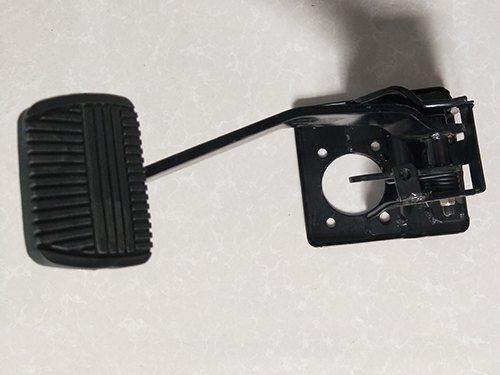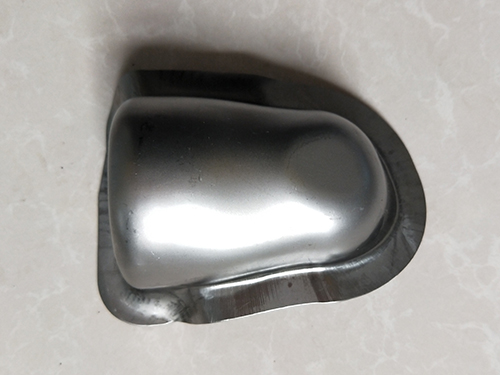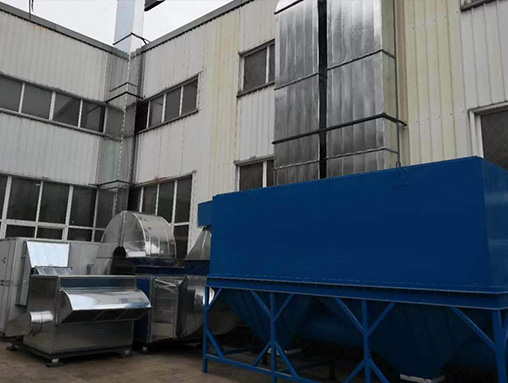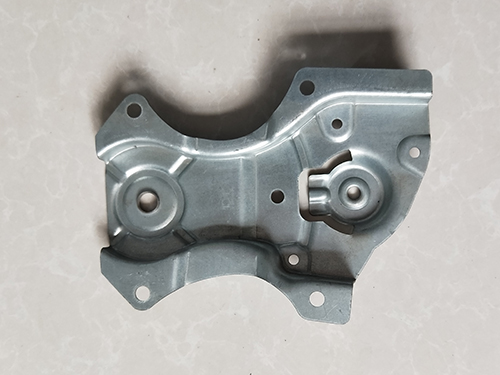Stamping parts require thickness of sheet metal and deep drawing process
Processing stamped parts requires strict thickness of the sheet metal, as the thickness of the material determines the clearance of the mold. The thickness difference of sheet metal is large, and using the same die and gap for production can affect the quality and accuracy of the product. In severe cases, it can cause mold damage and even equipment accidents during the production of large stamping parts. The impact of sheet thickness deviation in the following processes is:
1) In the punching process, excessive positive or negative deviation in the thickness of the sheet metal can cause burrs. Plates with excessive negative deviation increase rebound, affecting dimensional accuracy. Excessive positive deviation in sheet metal can increase punching force and work, which may damage stamping equipment. Uneven material thickness can also cause single-sided burrs on stamped parts.
2) In the bending process, materials with large negative deviations tend to rebound, resulting in inaccurate shape and size of stamped parts, and easily causing bending and twisting phenomena. Excessive deviation in material thickness can cause compression on the curved surface, affecting the surface quality of stamped parts and increasing bending force and work, which may cause damage to the equipment. Uneven thickness can also cause inaccurate shape and size of stamped parts.
3) In the deep drawing process, if the negative deviation of the material thickness is too large, it will cause uneven appearance due to rebound, insufficient height of the stamped part, and the phenomenon of large mouth and small bottom of the stamped part. At the same time, it will also reduce the pressing force. The relative increase in the gap between the convex and concave molds causes wrinkling of the material during the deep drawing process, which increases the difficulty of metal material flow and thus increases the deep drawing force, leading to cracking of the stamped part at the rounded corners of the concave mold. The excessive positive deviation of material thickness increases the friction between the material, the edge ring, and the mold, as well as the relative reduction of the gap between the convex and concave molds, which increases the drawing force and causes the material to become thinner and crack at the rounded corners of the convex mold. Moreover, the increase in drawing force and drawing work may lead to equipment overload. Uneven material thickness will result in uneven wall thickness of stamped parts and uneven edges at the mouth. Severe uneven material thickness can cause stamped parts to break, and for large stamped parts, it can also damage molds and equipment.
Work hardening is an important factor in forming deep drawn parts and other materials. During deep drawing, metal sheets first undergo plastic deformation in areas with low deformation resistance. Due to work hardening, the deformation resistance of the material in this area gradually increases, and subsequent deformation is transferred to other areas, allowing for uniform thickness of the deep drawn part.
From this, it can be seen that sheet metal used for stamping and deep drawing should have the necessary hardening ability, and sheet metal with weak hardening ability should not be used for deep drawing. Metal sheets with strong work hardening can achieve uniform deformation in the same degree of deformation, reduce local thinning of the billet, and increase deformation parameters.
For deep drawing of complex shaped curved parts, the significant effect of work hardening mentioned above is that the production of work hardening reduces the plasticity of the material, hindering further stamping processing. For example, the punched sheet metal will form a layer of surface hardening structure on the surface of the shear zone, which is unfavorable for the subsequent plastic deformation processes such as bending, deep drawing, and flanging of the sheet metal. It can cause cracks or fractures in the workpiece. In multi pass deep drawing, if work hardening is ignored and continued, the semi-finished product will be pulled apart. In order to carry out work hardening and continue stamping processing, an intermediate annealing process is required. This increases the production cost of stamped parts and prolongs the production cycle.
The process of stamping is called deep drawing process, and the quality of deep drawing process is determined by factors such as the stamping direction, stamping position, pressing surface shape, and deep drawing ribs of the parts. The key to the deep drawing process is the comprehensive cutting and adjustment of various variables, and the deep drawing process is not only to meet the requirements of deep drawing, but also to provide conditions for subsequent stamping and manufacturing on the basis of meeting the requirements of deep drawing, and to lay a good foundation for edge cutting and flanging.
1. Stamping direction
There are three factors to consider when determining the stamping direction: first, whether the punch can enter the die; second, the joint state between the punch and the drawn blank; and third, whether the feeding resistance of each part of the pressing surface is uniform and mutually reinforcing.
2. Shape of the pressing surface
The pressing surface is a supplementary part of the deep drawing process and an important indicator for measuring the quality level of deep drawn parts. When designing the pressing surface, there are two points that need special attention:
1、 The stretching should be controlled reasonably. When the pressing surface is on the flange surface of the part, the bending of the pressing surface should be given. In addition, the part of the pressed material needs to be processed into a tilted angle with an angle, in order to control the drawing and make the blank fit with the pressed material surface to a large extent. Attention should be paid to the issue of tilt angle. If the angle is too small, wrinkles will appear, but if it is too large, it will increase stretching.
2、 Do not ignore the drawing effect of the punch on the drawn blank. If the unfolded length of the pressing surface is reduced compared to the unfolded length of the convex die, the convex die will have a stretching effect on the drawn blank. However, this does not mean that wrinkles can be avoided. In fact, when the convex die produces a stretching effect, the comparison between the unfolded length of the pressing surface and the unfolded length of the convex die surface at each moment will have an effect. If the former is shorter than the latter, it will have a stretching effect, while the opposite will produce wrinkles. If the number of wrinkles generated in the deep drawing process is very small, it may be affected by the stretching effect, so it is difficult to make a comparative judgment on the wrinkles formed in the actual setting of the lubrication operation.
Reason for wrinkling of stretched parts
Stretching parts may be affected by various factors during the stretching process, leading to wrinkling. Overall, these factors mainly affect the process:
1) Excessive stretching of stamped parts can easily cause the sheet metal to flow too quickly during feeding, resulting in the parts becoming rough.
2) During the stretching process, the concave die angle of the stamped part exceeds the range, causing the convex die to be unable to press the material during the stretching process, and the flow of the sheet metal is not constrained, resulting in wrinkling.
3) Design issues with the pressing ribs of stamped parts, where the size of the ribs does not match or there is a deviation in their position, resulting in uncontrolled flow of the sheet metal and causing wrinkling.
4) Insufficient pressure on the top rod leads to improper stamping of the stamped parts, resulting in wrinkling.
5) Deviations in mold design can also cause the material to be unable to be compacted during the stretching process of stamped parts, the edge of the material to be too small, and the stretching process to be unable to press the material, resulting in cracking.
6) The gap between the concave and convex molds is too large, which makes it impossible to press the material during the stretching process, resulting in wrinkling.
These six points are common factors affecting wrinkling during the stretching process, but when dealing with wrinkling, it is necessary to analyze the specific situation in order to identify the cause of wrinkling in the body.







